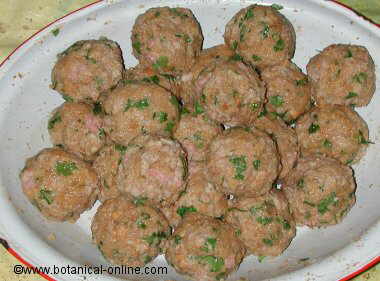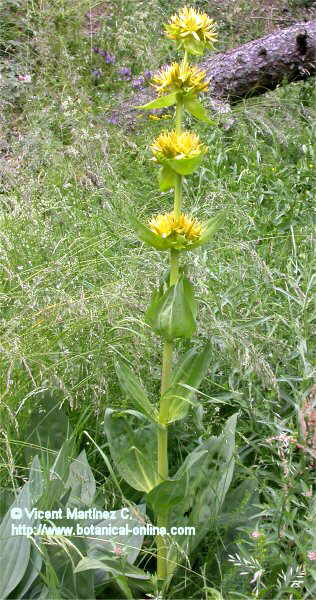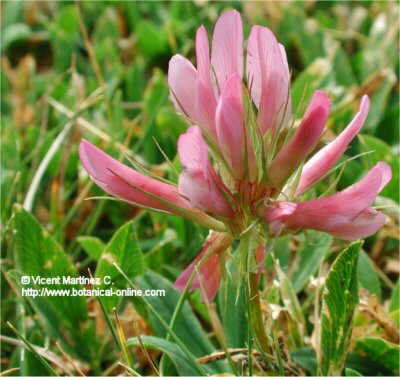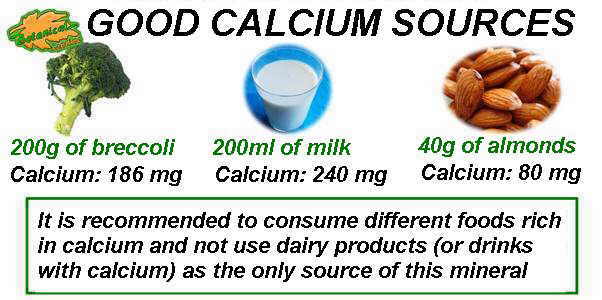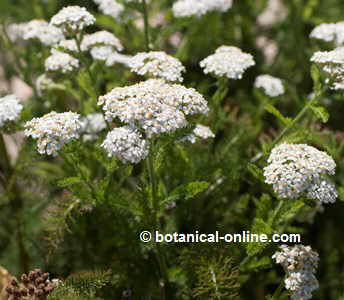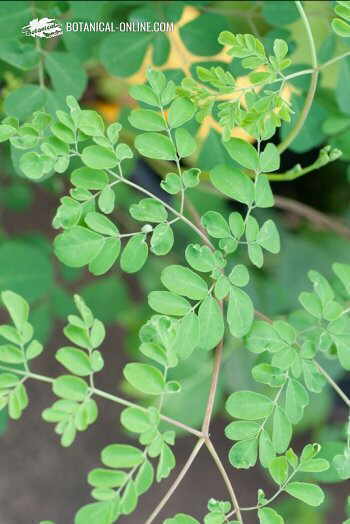Contents
CUBED OR TAILED PEPPER PROPERTIES
Common English Name: Cubeb, Kubeben pepper, tailed pepper.
– Spanish: Cubeba, pimienta Cubeba, cordoncillo, pimienta de cola, pimienta de Java.
– Catalan: pebre cubeba
– German: Kubeben-Pfeffer, Schwanz-Pfeffer
– French: cubèbe, Poivre to Queue
Scientific name: Piper cubeba L.
Taxonomic synonym: Cubeba officinalis.
Family: Piperaceae
Habitat: plant native to Indonesia, the region of Java and Maluku. At present, the Cubeba is grown primarily in Southeast Asia, the region of Indonesia. The cubeba is a vine or creeper normally cultivated with coffee trees.
It is a very similar plant to black pepper (Piper nigrum) but differs from it because of its stalked fruit. This feature also gives it the name “tailed pepper”, where “tail” is the colloquial term to describe the petiole of the fruit.
Botanical description of cubeba pepper
Cubeba pepper (Piper cubeba) is a perennial vine up to 6 meters high. It has essential oils in leaves and seeds, giving off a strong fragrance.
Leaves petiolate, round or heart-shaped (unlike what other Piper), 2.5-5 cm long. The inflorescence is a pedunculated flower spike, opposed to the leaves, that comes from the notes of the main stems.
Yellowish green flowers, arranged in spiral along the spine. Flowers are sessile but its fruit is stalked at maturity.
The cubeb pepper fruit is a drupe with fleshy mesocarp, about 4 millimeters in diameter and brownish-gray. It is bitter and spicy. The fruit, unlike the fruits of Piper species, is stalked. The stalk of the fruit is about 6 mm. It has a brown crust with prominent veins which form a lattice on the entire surface. Inside it reserves a white seed, oily and papyraceous with a strong odor. It tastes bitter and aromatic.
Cubeba pepper has not be confused with the false cubeba (P. crassipes), commonly used to adulterate Cubeba aromatic mixtures.
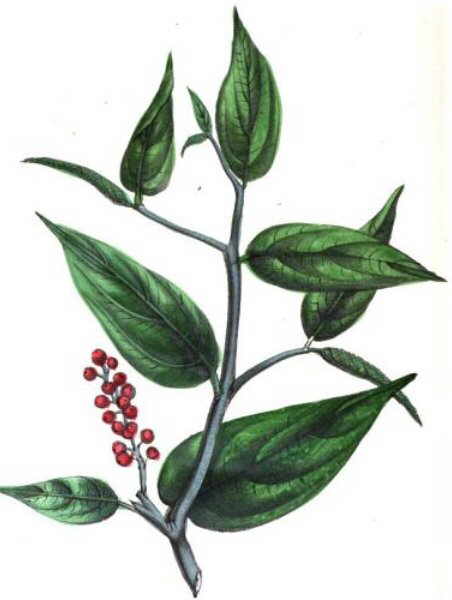
Composition of pepper cubeba
– Resinoids
– Monoterpenes: cubenene, levo-cineole, thujene, phellandrene, pinene, delta-cadinene.
– Alcohol terpenes: cubenol,, cadinol, ledol.
– Sesquiterpenes: aromadendrene, bisabolene, beta-caryophyllene, calamenen, humulene.
– Phenylpropanes: myrcene, eugenol, safrole, sabinol.
– Cubebin: responsible for the medicinal properties of the cubeba. Substance discovered in 1839 by Eugène Soubeiran. The oil containing 1% of cubeic acid and about 6% resin.
Properties of pepper cubeba
It was formerly a widely used spice, although, due to its bitter taste, it possibly fell into disuse confusing it with a shoddy pepper.
It has been attributed with the following medicinal properties:
– Diuretic
– Gonorrhea
– Indigestion
– Stimulant
Pepper cubeda properties are due to its aromatic components and resins. Mainly, it has been effective in stimulating the secretions of pulmonary and urinary apparatus.
– The main medicinal uses for cubeba relate with genitourinary infections such as remedies for gonorrhea,, cystitis, urethritis, abscesses of the prostate gland and to treat leucorrhoea. Also to remedy hemorrhoids.
– Stomachic and carminative properties of pepper cubeda are used to treat indigestion and flatulence.
– Being antiseptic, expectorant and disinfectant, it can be used in throat infections, colds, sinusitis, chronic cough, chronic bronchitis. Ayurvedic medicine uses it to treat halitosis.
– Cubeic acid and resins can increase the urine output. Treatments with this plant give the urine a peculiar smell.
– Cubeda essential oil is irritant. It can cause headache, nausea, or it can have a laxative effect.
| Composition of fruit of pepper cubeda(Piper cubeba) | |
| Chemical compound | Contents(in ppm.) |
| Resinoids | 64.000 – 85.000 |
| Resin | 30.000 – 37.000 |
| Cubebin | 25.000 |
| Cubebol | 10.000 – 20.000 |
| Cadinene | 8.800 – 17.600 |
| Cubenene | 7.100 – 14.200 |
| Aromadendrene | 4.200 – 8.400 |
| Calamenene | 3.700 – 7.400 |
| Caryophyllene | 3.700 – 7.400 |
| Cubenol | 1.750 – 3.500 |
| Bisabolene | 1.500 – 3.000 |
| Muurolene | 1.200 – 2.400 |
| Cadinol | 1.000 – 2.000 |
| Cineole | 700 – 1.400 |
Other uses of Cubeba pepper
– In medieval European cuisine, the spice cubeba was greatly appreciated. It was used in the preparation of the sauce sarcenes, and its use declined probably due to its bitter taste, which could have been mistaken for a shoddy pepper.
– Cubeba is still widely used as a a spice, to season meats and prepare sauces. The Arabs exported it to Africa some traditional dishes as markouts, and spice blends as Raz el hanout are cooked with it. In Indonesia it is a common spice.
– Cubeba is used to prepare gin.
– Cubeba is also used in cigarettes, mixed with tobacco.
![]() More information about black pepper and other types of peppers
More information about black pepper and other types of peppers
| Botanical classification | |
| Kingdom | Plantae |
| Subkingdom | TracheobiontaVascular plants |
| Superdivision | SpermatophytaSeed plants |
| Division | MagnoliophytaFlower plants |
| Class | MagnoliopsidaDicotyledons |
| Order | Piperales |
| Family | Piperaceae |
| Gender | Piper |
| Species | P. cubeba L. |
![]() More information about black pepper and other types of peppers
More information about black pepper and other types of peppers


